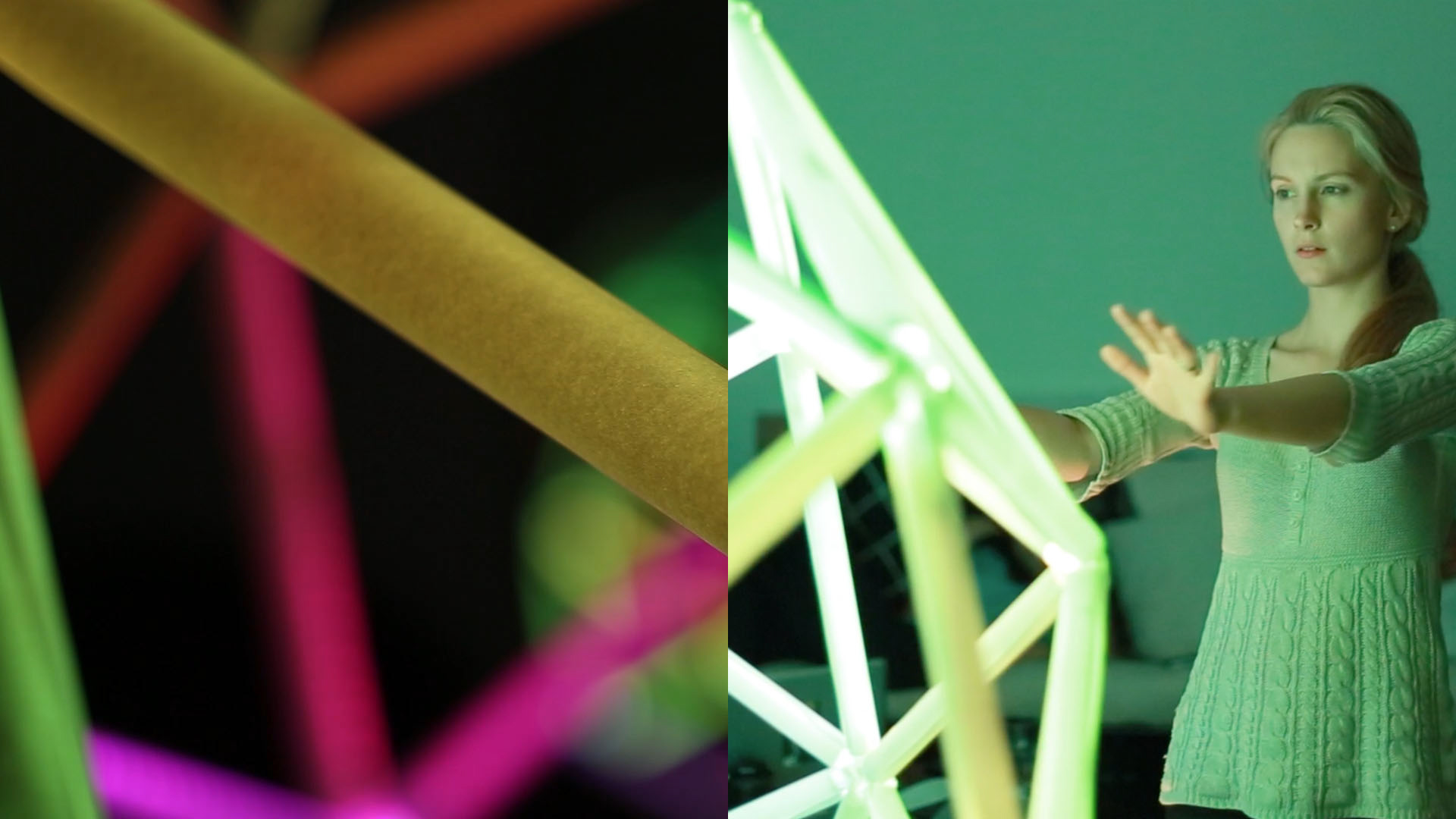“Barcelona” presented by Laurenzo Coronel and Clark
Presentation Title:
Presenter(s):
Contributors:
- Fabrizio Devoto
-
- BAU Architecture studio
- Tatjana Kudinova
-
- Tatjana Kudinova Design
Abstract:
Barcelona is an interactive installation. Its interest resides not only in its aesthetic proposal, but also in that it shows how media appropriation allows artists to reclaim and re-signify the technological production while reflecting on the relationship between DIY practices and state-of-the-art technologies. The piece consists on a two–meter tall Pentakis dodecahedron, with each edge independently lit using LED strips. The installation reacts to both to its environment – it senses movements and sounds produced on its vicinity – and to remote interactors via web and mobile real-time interfaces. Barcelona is also a performance instrument offering a control interface that allows for multi-user real-time audio-visual performances.
All the hardware in Barcelona is of the artist’s authorship. Moreover, every functional component is visible and contributes to its appearance. However, the cabling within the dodecahedron is concealed. Spectators can follow the data path from the controllers to the piece, but not inside of the structure, allowing for an organic perception of the piece.
We use twelve new LED drivers located on a table at the bottom of the dodecahedron. Ninety cables connect the drivers to every edge of the polyhedron. The structure consists of PVC pipes of two different lengths with 3D-printed joints that allow for its rapid assembly. On each edge there is a RGB LED strip surrounded by a cylindrical diffuser.
Barcelona reflects on ISEA2015’s theme of disruption within multiple axes. Allowing for simultaneous local and remote interactors contests the notion of gallery space and of exhibition. Also, Barcelona’s dual role of installation and instrument presents it as a communication tool where the Douchampian collaboration of artist and spectator towards the artwork is diffused yet highlighted by the uncertainty brought by possible remote interactors.
In addition, Barcelona explicitly reflects on the relationship between technology production and art. Its visible functional components and DIY approach to electronics contest the artists’ role in technology consumption while reclaiming the aesthetics of the components.
The artwork is, and should be, hard to classify. It is an interactive sculpture, an instrument, a political statement. It joins state-of-the art manufacturing techniques with manual assembly and manual construction of the diffusers. It amalgamates a highly sophisticated software architecture with the explicitness of the data paths. It interacts with the space where it’s installed, illuminating and casting playful shadows, while simultaneously being incorporeal, streaming its state in real-time over the Internet, and enabling remote interaction. It is reactive and generative, with many modes of interaction and expression.






